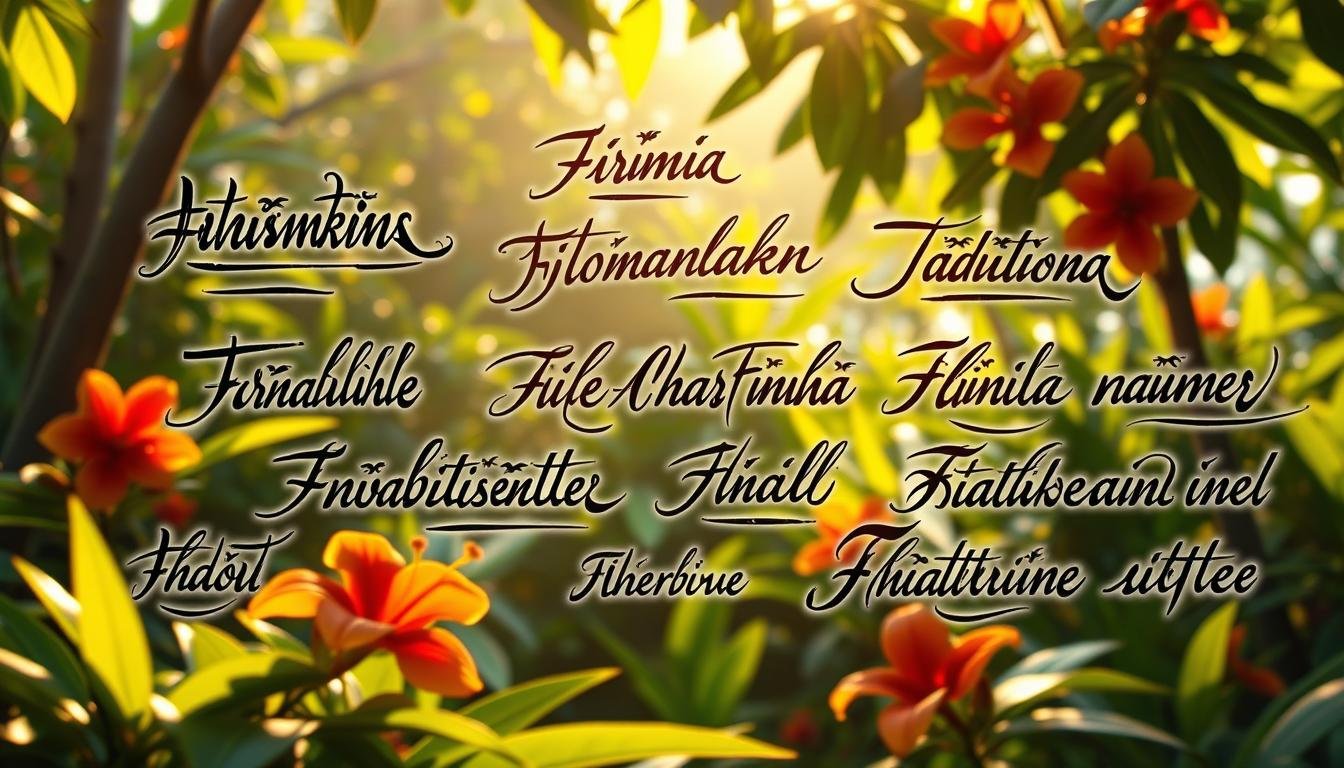Names hold a special place in Filipino culture. They are more than just labels; they carry stories, identities, and connections to the past. Before Spanish colonization, traditional naming practices in the Philippines were deeply rooted in nature, spirituality, and community. These names reflected the values and beliefs of pre-colonial societies.
The term Pinoy, often used today to describe a Filipino person, has a rich history. It is a self-referential word that connects modern identity to ancestral roots. Similarly, Pinay is used to refer to a Filipino woman. Both terms are steeped in tradition and continue to be widely used.
This article explores the origins and meanings of traditional names from the pre-colonial era. It also examines how these names evolved over time. Understanding these names offers a glimpse into the rich cultural heritage of the Philippines and helps us appreciate the depth of Filipino identity.
Key Takeaways
- Traditional names in the Philippines were deeply connected to nature and spirituality.
- The terms Pinoy and Pinay reflect modern Filipino identity with historical roots.
- Pre-colonial naming practices reveal the values of early Filipino societies.
- Spanish colonization significantly influenced the transformation of Filipino names.
- Rediscovering these names helps preserve cultural heritage and identity.
Introduction: Rediscovering Pre-Colonial Filipino Names
Before Spanish influence, Filipino names were deeply tied to nature and spirituality. These names were not just identifiers but reflections of the community’s values and beliefs. They carried stories of ancestry, environment, and spiritual connections.

Historical Background of Pre-Colonial Naming Practices
In pre-colonial times, names in the Philippines were often inspired by the natural world. Elements like rivers, mountains, and animals were common sources. For example, names like Dagat (sea) and Bundok (mountain) were prevalent.
Names also had spiritual significance. They were believed to protect individuals and connect them to their ancestors. The use of Baybayin, an ancient script, further emphasized the cultural depth of these naming practices.
Impact of Colonization on Traditional Names
Spanish colonization brought significant changes to Filipino naming customs. Traditional names were replaced with Spanish ones, often tied to Christianity. This shift disrupted the cultural connection between names and identity.
For instance, indigenous names like Lakan (nobleman) were replaced with Spanish titles like Don. This transformation marked a loss of cultural heritage but also created a blend of traditions.
| Aspect | Pre-Colonial Names | Post-Colonial Names |
|---|---|---|
| Inspiration | Nature, spirituality | Christianity, Spanish culture |
| Examples | Dagat, Bundok, Lakan | Maria, Jose, Don |
| Cultural Impact | Deep connection to heritage | Blend of traditions |
Rediscovering these traditional names is a way to reclaim history. It helps modern Filipinos reconnect with their roots and preserve their cultural identity. For more on ancient scripts, explore this guide to Baybayin.
The Historical Context of Filipino Terminology
The evolution of Filipino terminology reflects a rich tapestry of history and identity. From pre-colonial times to the modern era, words like Pinoy and Pinay have become symbols of cultural pride. These terms, rooted in the Tagalog language, have evolved alongside the nation’s journey.
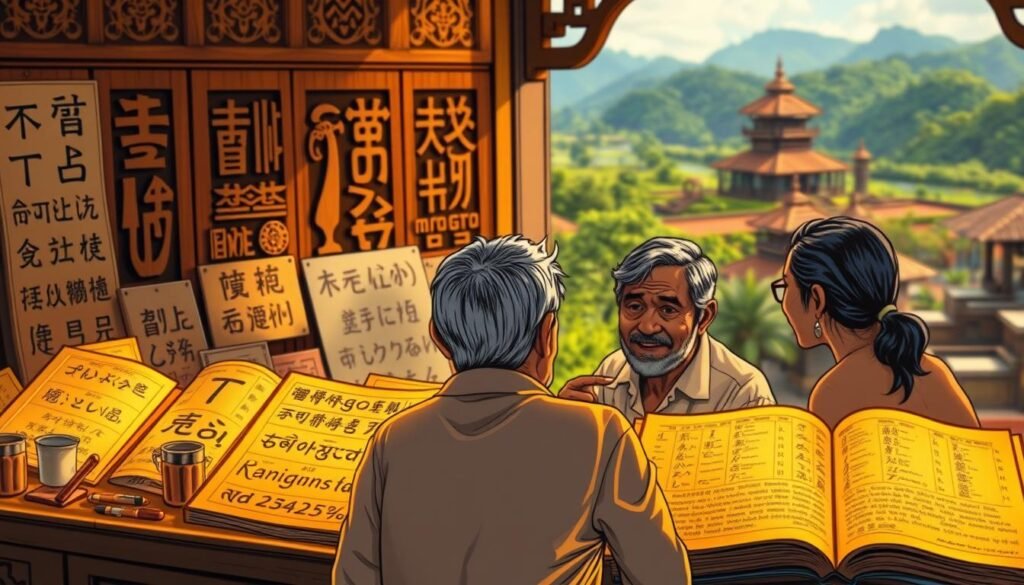
Early records show that the Filipino identity was shaped by significant historical events. During the Spanish colonial period, the introduction of new words and titles altered traditional naming practices. This shift laid the groundwork for the blending of indigenous and foreign influences.
Milestones in the Evolution of Filipino Identity
The 1930s marked a turning point in the development of a national language. The Commonwealth government recognized the need for a unified term to bridge diverse dialects. This led to the establishment of Pilipino, later renamed Filipino, as the national language in 1987.
Publications and speeches played a crucial role in popularizing these terms. For example, early 20th-century newspapers in the Philippines frequently used Pinoy to describe a person of Filipino descent. Overseas, especially in the United States, the word became a badge of identity for immigrants.
Language also served as a tool for resistance. During the American colonial period, the use of Tagalog in literature and media preserved cultural heritage. This resilience ensured that Filipino terms remained relevant despite external influences.
Today, the use of Pinoy and Pinay continues to evolve. These terms are not just identifiers but also cultural symbols. They remind us of the enduring spirit of the Filipino people and their ability to adapt while staying true to their roots.
Etymology and Linguistic Roots in Pinoy Culture
The linguistic roots of Filipino culture reveal a fascinating blend of history and identity. Words like Pinoy and Pinay are more than just terms; they are symbols of cultural pride and resilience. Understanding their origins helps us appreciate the depth of Filipino heritage.
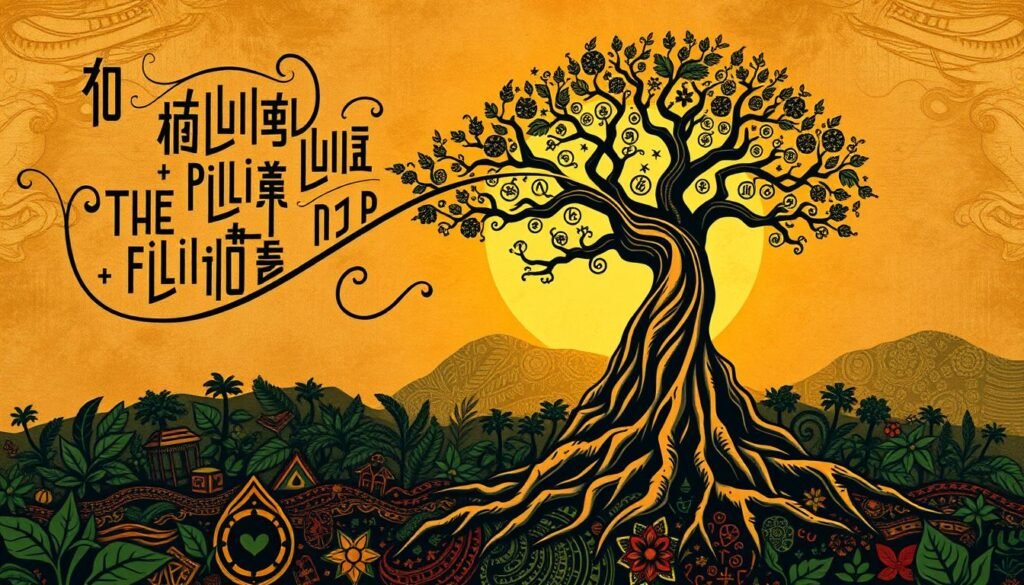
Origins and Usage of “Pinoy” and “Pinay”
The term Pinoy was first coined by Filipino Americans in the 1920s. It is a derivative of the word Filipino, with the addition of the diminutive suffix -oy. This suffix is common in Tagalog and is often used to create affectionate nicknames.
Similarly, Pinay refers to a Filipino woman. Both terms gained popularity in the United States, where they became markers of identity for immigrant communities. Over time, they were reclaimed by Filipinos in the Philippines, especially during the 1960s and 1970s, as symbols of cultural pride.
Tagalog Naming Conventions and Diminutive Suffixes
In Tagalog, naming conventions often include diminutive suffixes like -oy, -ing, or -an. These suffixes add a sense of familiarity and endearment. For example, the name Juan might become Juanito or Juaning in informal settings.
This practice reflects the communal and affectionate nature of Filipino culture. It also highlights the adaptability of the Tagalog language, which has evolved through centuries of cultural exchange.
| Aspect | Details |
|---|---|
| Origin of “Pinoy” | Coined by Filipino Americans in the 1920s |
| Meaning of “Pinay” | Refers to a Filipino woman |
| Diminutive Suffixes | Common in Tagalog, e.g., -oy, -ing, -an |
| Cultural Reclamation | 1960s and 1970s in the Philippines |
Popular culture, including music, has played a significant role in reinforcing these linguistic roots. Songs like “Pinoy Ako” by Orange and Lemons celebrate Filipino identity and the enduring spirit of the Filipino people.
Glossary: Key Pre-Colonial Filipino Terms
Exploring pre-colonial Filipino terms offers a window into the rich cultural heritage of the Philippines. These words, often forgotten or replaced, carry deep meanings rooted in nature, spirituality, and community. Understanding their etymology helps us appreciate the continuity of Filipino identity.
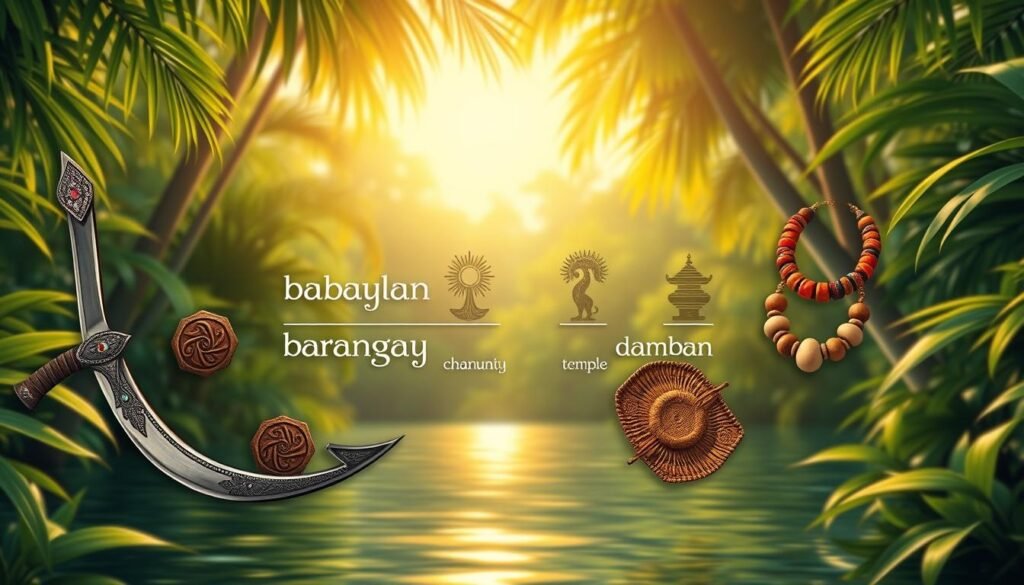
Definitions and Interpretations of Forgotten Terms
Many pre-colonial Filipino terms were inspired by the natural world. For example, Dagat (sea) and Bundok (mountain) reflect the environment’s influence on naming practices. These words were not just nouns but carried spiritual significance, connecting individuals to their ancestors.
Another term, Lakan, referred to a nobleman or leader. It symbolized authority and respect within the community. Unlike modern titles, Lakan was deeply tied to indigenous social structures.
Examples and Contextual Usage in Historical Texts
Historical documents, such as the Laguna Copperplate Inscription, provide insights into early Filipino terms. This artifact, dated 900 CE, mentions words like Pailah and Dewata, which highlight the blend of indigenous and foreign influences.
In Tagalog literature, terms like Bathala (supreme deity) were used to describe spiritual beliefs. These words reveal the cultural depth of pre-colonial societies.
| Term | Meaning | Context |
|---|---|---|
| Dagat | Sea | Nature-inspired name |
| Lakan | Nobleman | Social hierarchy |
| Bathala | Supreme deity | Spiritual beliefs |
Rediscovering these terms is essential for preserving Filipino heritage. As the Tagalog language evolved, many words were replaced or adapted. For more on this evolution, explore the history of Tagalog.
Pinoy Cultural Identity in the Modern Era
The modern era has seen a resurgence of Filipino cultural pride, deeply rooted in pre-colonial traditions. From music to art, these influences continue to shape national identity and foster a sense of unity.
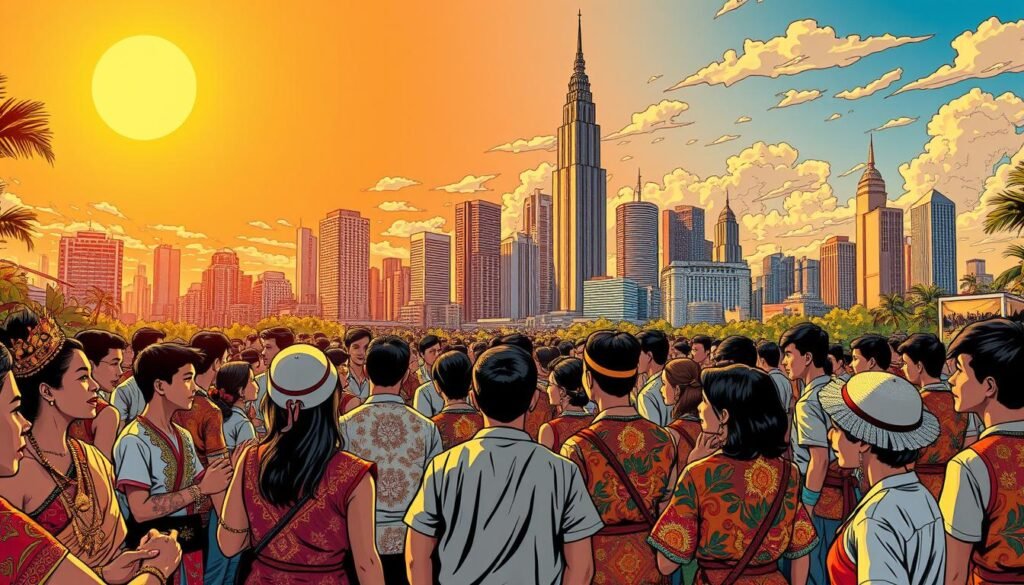
Influence on Music, Art, and National Pride
Pinoy music has become a powerful medium for expressing cultural pride. Artists like Heber Bartolome and Francis Magalona have blended traditional Tagalog lyrics with modern genres, creating a unique sound that resonates globally. Songs like “Pinoy Ako” celebrate Filipino identity and inspire national pride.
In art, pre-colonial themes are reinterpreted in contemporary works. Paintings and sculptures often draw inspiration from indigenous symbols, bridging the gap between history and modernity. This artistic expression helps preserve cultural heritage while appealing to younger generations.
Legacy of Pre-Colonial Names in Contemporary Society
The legacy of pre-colonial names thrives in the Philippines, influencing modern cultural expressions. Traditional terms like Lakan and Dagat are celebrated in festivals and literature, connecting people to their ancestral roots.
Media and entertainment also play a role in perpetuating these traditions. Films and TV shows often incorporate pre-colonial names and stories, reinforcing their importance in everyday discourse. This interplay between history and popular culture ensures that these terms remain relevant.
For more on the evolution of Filipino culture, explore this exploration of cultural heritage.
Conclusion
Rediscovering pre-colonial Filipino naming traditions offers a profound connection to the past. These names, rooted in nature and spirituality, reveal the values of early societies in the Philippines. They serve as a bridge between history and modern identity, reminding us of the richness of our heritage.
Historical and linguistic analysis highlights the deep cultural significance of these terms. From Lakan to Dagat, each name carries stories of ancestry and community. This exploration helps us understand how indigenous practices shaped contemporary Filipino identity.
The transformation from traditional to modern naming reflects the resilience of Filipino culture. Despite colonial influences, these names continue to inspire pride and connection. For a deeper dive into cultural heritage, explore this guide to Filipino time.
Embracing these traditions fosters a renewed appreciation for our roots. It encourages us to celebrate the enduring legacy of our ancestors. Let this journey inspire you to explore and preserve your linguistic heritage with pride.
FAQ
What are pre-colonial Filipino names?
Pre-colonial Filipino names are traditional names used by indigenous communities in the Philippines before Spanish colonization. These names often reflect nature, ancestry, or cultural values.
How did colonization affect Filipino naming practices?
Colonization introduced Spanish and Christian names, replacing many traditional Filipino names. This shift altered the cultural identity tied to pre-colonial naming conventions.
What is the origin of the term "Pinoy"?
The term “Pinoy” comes from the word “Filipino” and is a colloquial way to refer to a Filipino man. It gained popularity in the 20th century as a marker of cultural identity.
What are Tagalog naming conventions?
Tagalog naming conventions often include diminutive suffixes like “-oy” or “-ay” to create affectionate or informal versions of names, such as “Noynoy” from “Benigno.”
How are pre-colonial Filipino terms preserved today?
Pre-colonial Filipino terms are preserved through historical texts, cultural studies, and efforts to revive indigenous languages and traditions in modern society.
How has pre-colonial culture influenced modern Filipino identity?
Pre-colonial culture influences modern Filipino identity through music, art, and national pride, with many Filipinos rediscovering and celebrating their ancestral heritage.
Source Links
- Filipinos
- History of the Philippines
- A History of the Philippines
- Bookbed recommends: ‘Filipino Prehistory: Rediscovering Precolonial Heritage’ by F. Landa Jocano
- History of the Philippines (900–1565)
- Tagalog’s Timeline: From Ancient Script to National Status
- Tagalog vs Filipino: What’s the difference? – Ethnolink
- Culture of the Philippines
- What is Tagalog? History & Facts – Festive Pinoy
- Filipino language
- Explore the Vibrant Culture and Traditions of Ancient Filipinos – Festive Pinoy
- Early Filipino Settlements: Exploring Early Community Life – Festive Pinoy
- Understanding Filipino traits, values, and culture | Outsource Accelerator
- Philippines – Culture, Diversity, Traditions | Britannica
- Exploring Filipino Identity in Architecture – Richest Philippines
- In Focus: Cultural Identity and Development – National Commission for Culture and the Arts
- Understanding the Appeal of Pinoy Teleserye: Why it Captivates Audiences
- Pinoy pride: Rather than earn it, Filipinos CAMPAIGN for it

